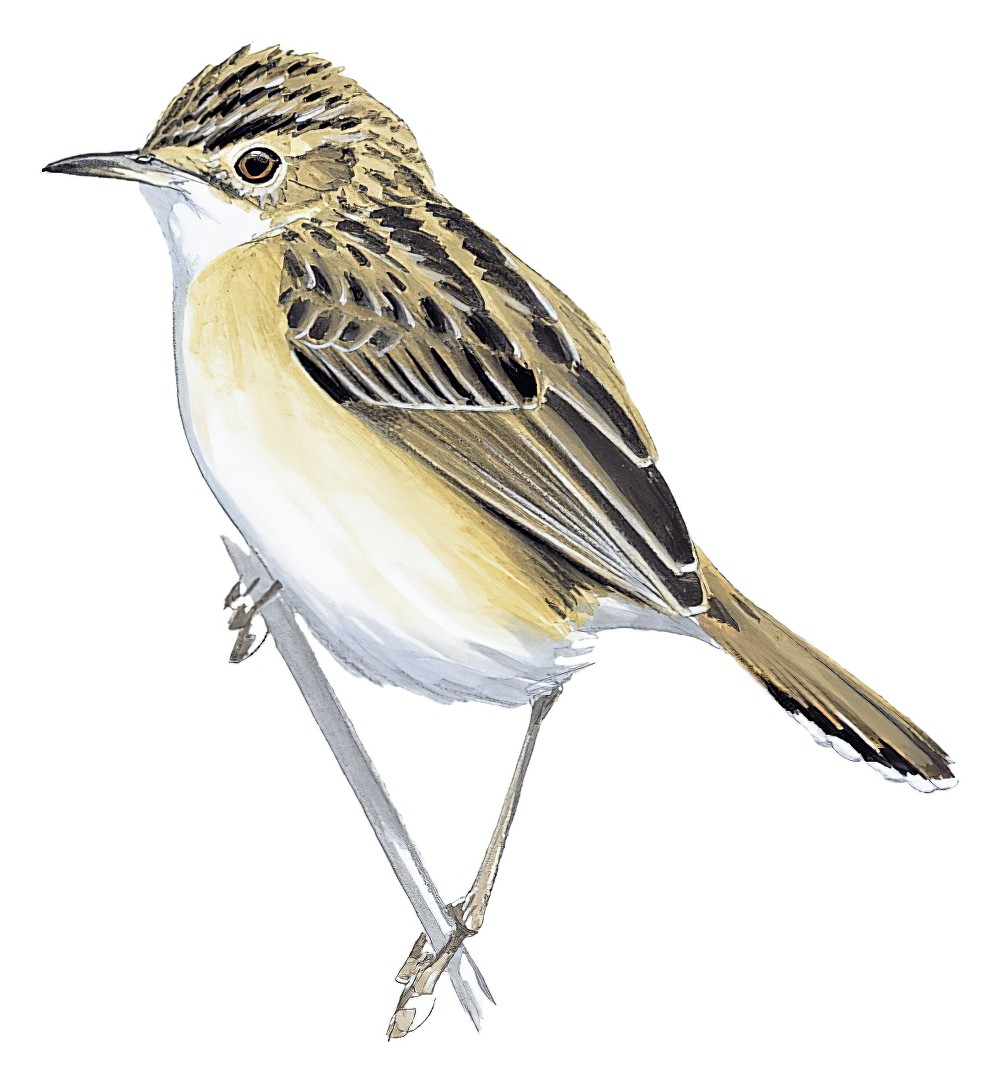Madagascar Cisticola / Cisticola cherina

Madagascar Cisticola
SCI Name:
Protonym: Drymoica cherina Ill.Zool.S.Afr. pl.77 fig.2,text
Taxonomy: Passeriformes / Cisticolidae / Cisticola
Taxonomy Code: madcis2
Type Locality: 'Cape Colony'' = Madagascar.
Author: Smith, A
Publish Year: 1843
IUCN Status: Least Concern
DEFINITIONS
CISTICOLA
(Cisticolidae; † Zitting Cisticola C. juncidis cisticola) Gr. κιστις kistis little basket < dim. κιστη kistē basket; L. -cola dweller < colere to dwell (cf. specific name Sylvia cisticola Temminck, 1820 (= subsp. Cisticola juncidis)); the Zitting Cisticola, formerly known as Fan-tailed Warbler, is the only European member of this wide-ranging Old World, predominantly Afrotropical, genus of small monomorphic warblers; “2. Sylvia cisticola. ... 2. Zistensänger. Cisticola. E[ntwickelung]. Wie gewöhnlich. Ch[arakter]. Kleine Oleandersänger mit hellrostfarbigem, schwarz geflecktem Rücken. L[ebensart]. Sie leben wie die übrigen Rohrsänger, bauen aber ein trichterförmiges Nest ins hohe Gras.” (Kaup 1829); "Cisticola Kaup, 1829, Skizzirte Entwickelungs-Geschichte Europäisch. Thierwelt, p. 119. Type, by tautonymy, Sylvia cisticola Temminck." (Traylor in Peters, 1986, XI, p. 84).
Var. Cisiticola.
Synon. Calamanthella, Cistodyta, Drymodyta, Drymodytops, Dryodromas, Hemipteryx, Merion, Neocisticola, Nephelicola, Pseudhemipteryx, Rhathymodyta, Tachydyta, Threnetes, Threnodyta, Threnodytops, Threnolais.
cisticola
Gr. κιστις kistis little basket < dim. κιστη kistē basket; L. -cola dweller < colere to dwell.
cherina
Etymology undiscovered; “DRYMOICA CHERINA.—SMITH. ... This species occurs within the limits of the Cape Colony; but it is a rare bird as compared with D. textrix. Like the latter, it inhabits situations covered with strong grass, and seeks its food, which consists of small insects, either on the ground or upon the grass itself, along the stalks of which it runs with great facility. It also perches upon small shrubs. The absence of anything like brown spots on the breast forms at once a character by which it is distinguishable from D. textrix, and the colour of the upper parts, added to the greater size of the bill and feet, constitute diagnostic characters by which it is to be recognized from D. terrestris.” (A. Smith 1843, Illustr. Zool. South Africa, Aves, pl. 77, fig. 2, and text). The Madagascar Cisticola does not occur in southern Africa, therefore Smith could not have seen it in life nor known anything of its habits (Cisticola).
UPPERCASE: current genus
Uppercase first letter: generic synonym
● and ● See: generic homonyms
lowercase: species and subspecies
●: early names, variants, mispellings
‡: extinct
†: type species
Gr.: ancient Greek
L.: Latin
<: derived from
syn: synonym of
/: separates historical and modern geographic names
ex: based on
TL: type locality
OD: original diagnosis (genus) or original description (species)












